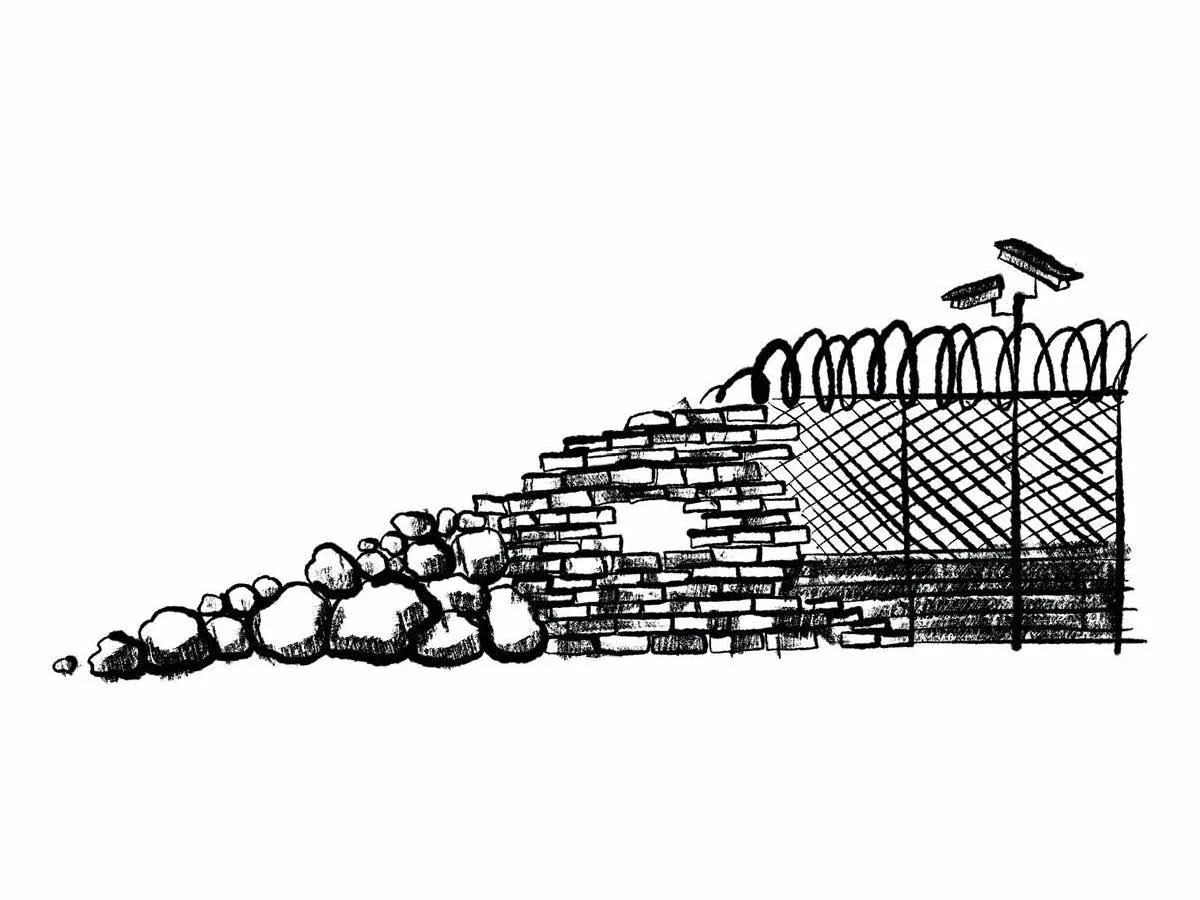
Image by Ivy Sanders Schneider

Image by Ivy Sanders Schneider
In 2021, researchers in the Baltic Sea happened upon a submerged stone embankment built by neolithic trappers for the purpose of corralling and slaughtering reindeer. Dating from ten thousand years ago, it is perhaps the world’s oldest freestanding wall, built around the same time as one of the common claimants of that title: the storied walls of the ancient city of Jericho, constructed in the ninth century B.C.E. and mythologized in the Book of Joshua. Ultimately, the Jericho structures were abandoned after the Jordan River receded, and the poachers’ wall drowned under snowmelt.
Only sixty miles west of the Jericho archaeological site, the state of Israel spent decades and millions of dollars creating a supposedly impregnable perimeter around the Gaza Strip. By now, it’s inarguable that the so-called Iron Wall — comprising not just aboveground impediments but remote-controlled weaponry, sophisticated surveillance systems, and an entire subterranean anti-tunnel installation — was a failure. Breaching the barrier was a technological accomplishment: Hamas used drone-dropped explosives and rocket-propelled grenades to disable hundred-thousand-dollar surveillance towers. But Hamas’s primary assets were simply time and determination. As one foreign policy expert told Newsweek, “The lessons for the Pentagon are huge.” The lessons for everybody are huge, but they’re hardly being heeded. It seems like even the most sophisticated wall may be breached by those it hems in. Nevertheless, repairs on the Iron Wall are underway, and Israel has announced it is constructing a new series of outposts on its side of the fence, presumably at fantastic expense.
In America, the evolution of border structures, from early barbed wire and military-surplus slats to the tall chain-link of the early 2000s and the semi-standard steel and concrete bollard fences of today, has been almost as ineffective in deterring would-be immigrants as it has in dampening our collective zeal for more walls. During Donald Trump’s presidency, a group of contractors submitted bids on a project to model a blockade of the U.S.-Mexico frontier. Six companies, including the subsidiary of an Israeli weapons manufacturer, received hundreds of thousands of dollars each to construct thirty-foot tall prototypes using much-vaunted proprietary technology. In the end, linking these impractically placed prototypes with the rest of the border wall (and with each other) was less expensive than demolishing them, so they were replaced with a new section of basic steel bollards.
A baseline faith in technology makes us predisposed to believe that all we need is the right wall, the right combination of razor wire and cement and COR-TEN, and all our problems will vanish in a puff of ingenuity. Eventually, maybe we’ll get bored with trying to build the “biggest,” “most beautiful” wall, and realize at last that one wall is really so much like the next.
Ian Volner has contributed articles on architecture and urbanism to The New York Times, The New Yorker, and Harper’s, among other publications. He is the author of numerous books and monographs, including The Great Great Wall: Along the Borders of History from China to Mexico (2020).